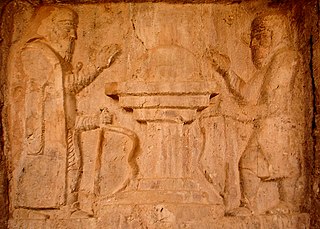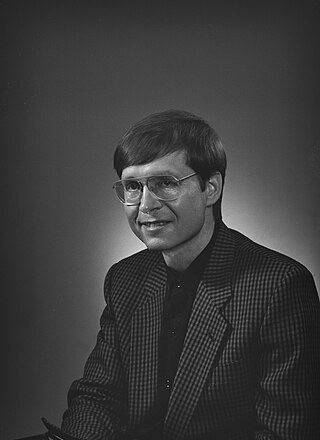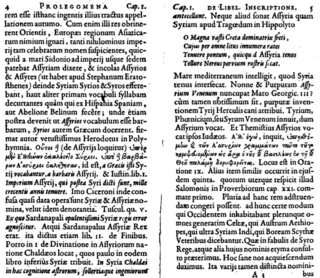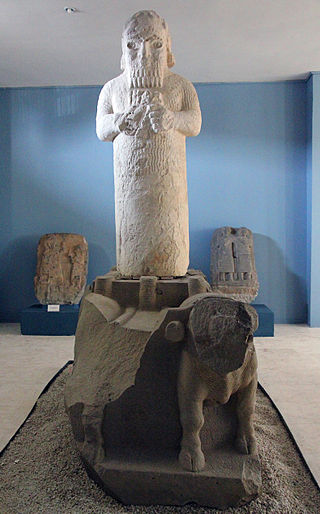Related Research Articles

Lydia was an Iron Age kingdom of western Asia Minor located generally east of ancient Ionia in the modern western Turkish provinces of Uşak, Manisa and inland Izmir. The ethnic group inhabiting this kingdom are known as the Lydians, and their language, known as Lydian, was a member of the Anatolian branch of the Indo-European language family. The capital of Lydia was Sardis.

The Medes were an ancient Iranian people who spoke the Median language and who inhabited an area known as Media between western and northern Iran. Around the 11th century BC, they occupied the mountainous region of northwestern Iran and the northeastern and eastern region of Mesopotamia in the vicinity of Ecbatana. Their consolidation in Iran is believed to have occurred during the 8th century BC. In the 7th century BC, all of western Iran and some other territories were under Median rule, but their precise geographic extent remains unknown.

Arame or Aramu was the first known king of Urartu.

Cyaxares was the third king of the Medes.

Helmut Rix was a German linguist and professor of the Sprachwissenschaftliches Seminar of Albert-Ludwigs-Universität, Freiburg, Germany.

Tomyris also called Thomyris, Tomris, or Tomiride, reigned over the Massagetae, an Iranian Saka people of Central Asia. Tomyris led her armies to defend against an attack by Cyrus the Great of the Achaemenid Empire, and, according to Herodotus, defeated and killed him in 530 BC.

Simo Kaarlo Antero Parpola is a Finnish Assyriologist specializing in the Neo-Assyrian Empire and Professor emeritus of Assyriology at the University of Helsinki.
Michael Douglas Roaf is a British archaeologist specialising in ancient Iranian studies and Assyriology.

The Melammu Project investigates the continuity, transformation and diffusion of Mesopotamian and Ancient Near Eastern culture from the third millennium BCE through the ancient world until Islamic times. It does so by organizing conferences and by providing resources relevant to the project on its website.
Sugunia was the first capital of Arame of Urartu. The city was mentioned in an inscription by the Assyrian king Shalmaneser III, who destroyed it in 858 BC.

The name Syria is latinized from the Greek Συρία. In toponymic typology, the term Syria is classified among choronyms. The origin and usage of the term has been the subject of interest, both among ancient writers and modern scholars. In early Hittite, Luwian, Cilician and Greek usage between the 9th century BC and 2nd century BC, the terms Συρία (Suría) and Ασσυρία (Assuría) were used almost interchangeably to specifically describe solely Assyria in northern Mesopotamia, modern-day Iraq, Southeast Turkey and Northeast Syria, but in the Roman Empire, the terms Syria and Assyria came to be used as names for distinct geographical regions. "Syria" in the Roman period referred to the region of Syria, while Assyria in Mesopotamia was part of the Parthian Empire and then Sasanian Empire and only very briefly came under Roman control. Henceforth, the Greeks then applied the term "Syrian" without distinction between the actual Assyrians of Mesopotamia, Northeast Syria and Southeast Anatolia, and now also to the Arameans and Phoenicians of the Levant who had not previously had the term applied to them or their lands.

The Çineköy inscription is an ancient bilingual inscription, written in Hieroglyphic Luwian and Phoenician languages. The inscription is dated to the second half of the 8th century BC. It was uncovered in 1997 near the village of Çine, that is located some 30 km south of Adana, capital city of the Adana Province in southern Turkey.
Pentti Aalto was a Finnish linguist who was the University of Helsinki Docent of Comparative Linguistics 1958–1980. Aalto was a student of G. J. Ramstedt. He defended his doctoral dissertation in 1949 in Helsinki.

The Achaemenid Empire or Achaemenian Empire was the ancient Iranian empire founded by Cyrus the Great of the Achaemenid dynasty in 550 BC, also known as the First Persian Empire. Based in Western Asia, it was the largest empire the world had ever seen at its time, spanning a total of 5.5 million square kilometres from the Balkans and Egypt in the west to Central Asia and the Indus Valley in the east.

Spargapises was the son of queen Tomyris of the Massagetai.

The Achaemenid conquest of the Indus Valley refers to a process beginning in the 6th century BCE and ending in the 4th century BCE, whereby the Achaemenid Persian Empire established control over the northwestern regions of the Indian subcontinent, today predominantly comprising the territory of Pakistan. The first of the two main invasions was conducted around 535 BCE by Cyrus the Great, who annexed the areas to the west of the Indus River, consolidating the early eastern border of the Achaemenid Empire. With a brief pause after Cyrus' death, the campaign continued under Darius the Great, who began to re-conquer former provinces and further expand Persia's political boundaries. Around 518 BCE, Persian armies under Darius crossed the Himalayas into India to initiate a second period of conquest by annexing regions up to the Jhelum River in Punjab.

Heidemarie Koch was a German Iranologist.
Karen Radner is an Austrian Assyriologist, the Alexander von Humboldt Professor of Ancient History at the University of Munich.

Michael Gehler is an Austrian historian. He has been teaching at the German University of Hildesheim since 2006.
Persica is a lost Ancient Greek text, divided in 23 books, on Assyrian, Median and Persian history written by Ctesias of Cnidus, a physician at the court of the Persian king Artaxerxes II. The work's style and value for the study of the Achaemenid history have been a subject of much controversy among modern scholars.
References
- 1 2 3 Rief, Astrid. "Univ.-Prof. Mag. Dr. Robert Rollinger_english". University of Innsbruck.
- ↑ "ÖAW Mitglieder Detail". www.oeaw.ac.at.
- ↑ Rief, Astrid. "Robert Rollinger_bibliography". University of Innsbruck.
- Univ.-Prof. Mag. Dr. Robert Rollinger_english
- ÖAW Mitglieder Detail
- Papers of Robert Rollinger on academia.edu: Robert Rollinger | University of Innsbruck - Academia.edu